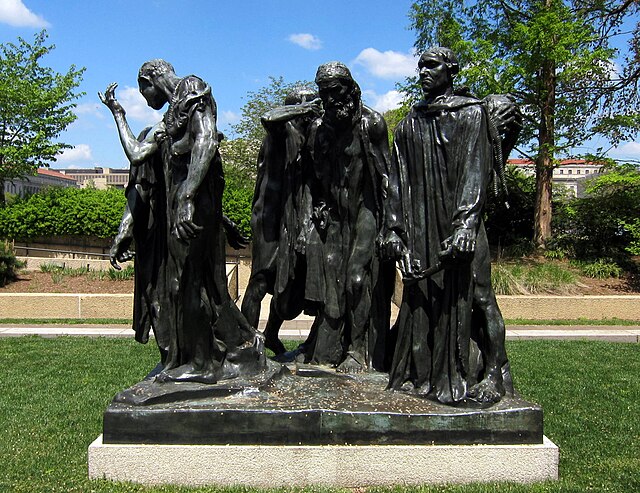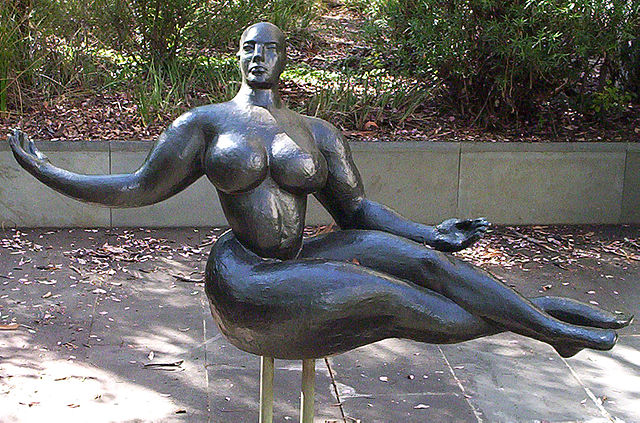Richard Serra was an American artist known for his large-scale abstract sculptures made for site-specific landscape, urban, and architectural settings, whose work has been primarily associated with Postminimalism. Described as "one of his era's greatest sculptors", Serra became notable for emphasizing the material qualities of his works and exploration of the relationship between the viewer, the work, and the site.
Serra in 2005, photographed by Oliver Mark
Bramme for the Ruhr-District, 1998 at Essen
Sea Level (South-west part), Zeewolde, Netherlands
Hours of the Day (1990), Bonnefanten Museum, Maastricht
Modern sculpture is generally considered to have begun with the work of Auguste Rodin, who is seen as the progenitor of modern sculpture. While Rodin did not set out to rebel against the past, he created a new way of building his works. He "dissolved the hard outline of contemporary Neo-Greek academicism, and thereby created a vital synthesis of opacity and transparency, volume and void". Along with a few other artists in the late 19th century who experimented with new artistic visions in sculpture like Edgar Degas and Paul Gauguin, Rodin invented a radical new approach in the creation of sculpture. Modern sculpture, along with all modern art, "arose as part of Western society's attempt to come to terms with the urban, industrial and secular society that emerged during the nineteenth century".
Auguste Rodin, The Burghers of Calais, 1889, Hirshhorn Museum and Sculpture Garden, Washington, D.C., cast 1943.
Gaston Lachaise, Floating Figure 1927, bronze, no. 5 from an edition of 7, National Gallery of Australia
Henry Moore, Double Oval (1966), Henry Moore Foundation
David Smith, CUBI VI (1963) at the Israel Museum in Jerusalem








